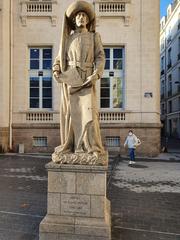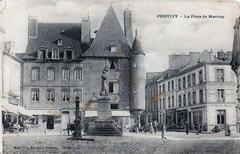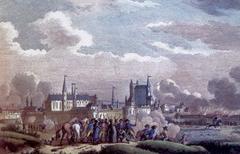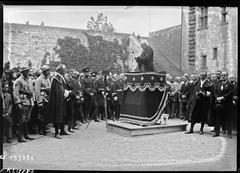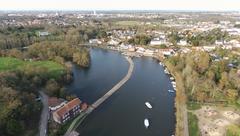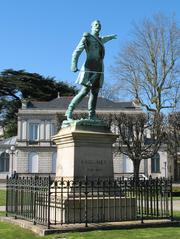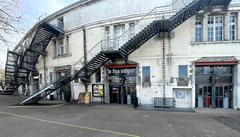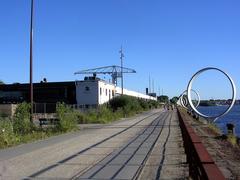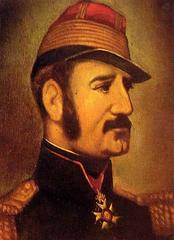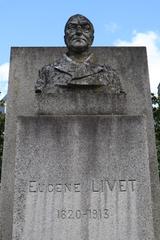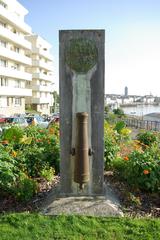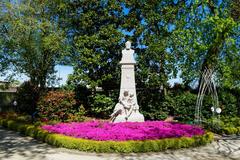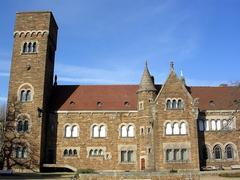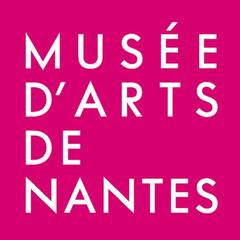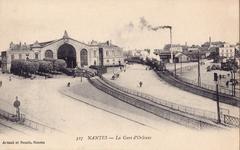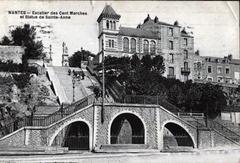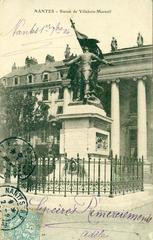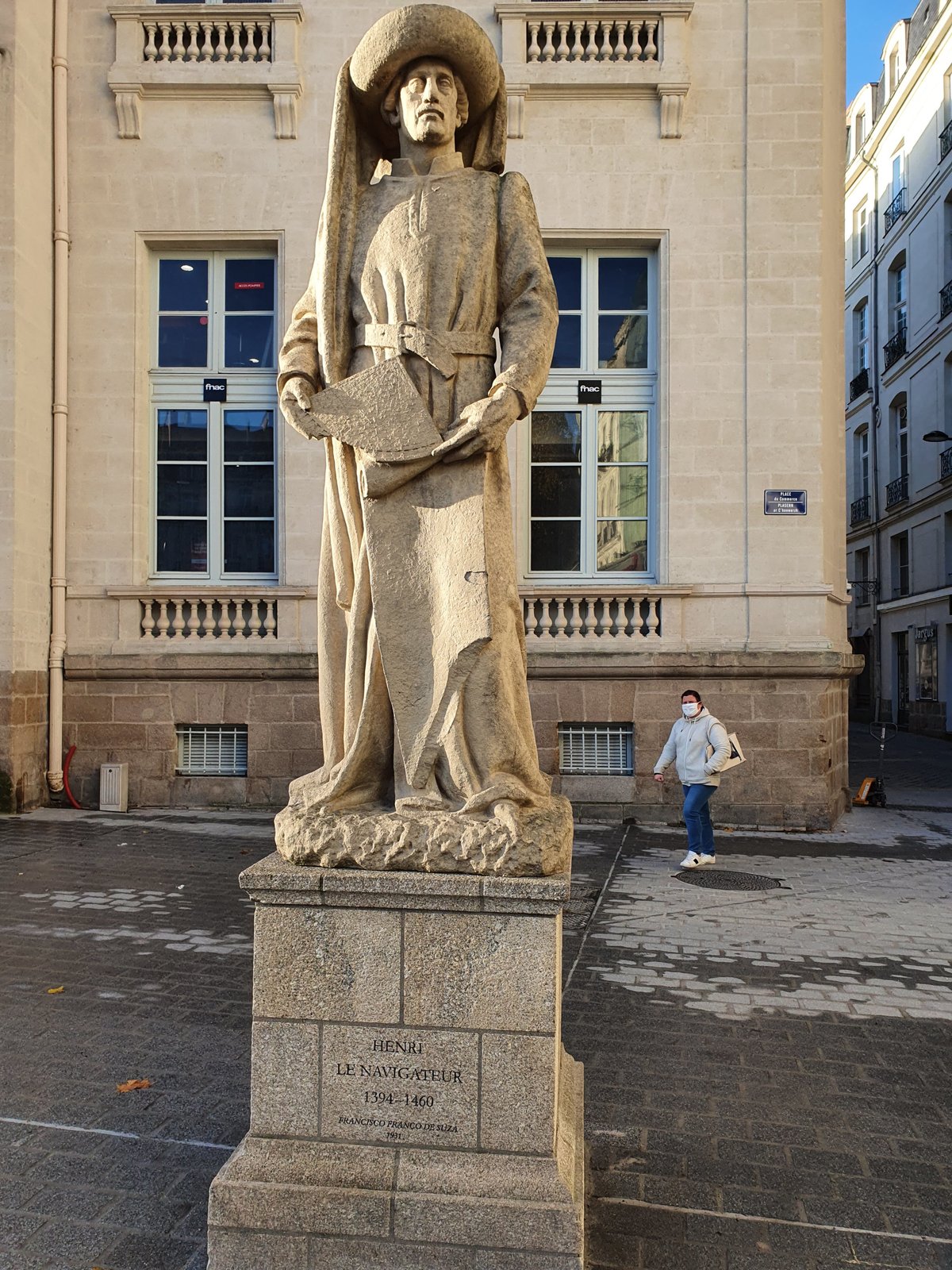
Henri Le Navigateur Visiting Hours, Tickets, and Nantes Historical Sites Guide
Date: 14/06/2025
Introduction
Henri le Navigateur (Henry the Navigator) stands as a foundational figure in maritime history, renowned for catalyzing Portugal’s early voyages during the Age of Discovery. While he never set sail himself, his innovative patronage, strategic leadership, and commitment to advancing navigation fundamentally reshaped European exploration, opening new sea routes and expanding global trade (Revisiting the Portuguese Empire; World History Encyclopedia).
In Nantes, France, the Henri le Navigateur monument is a focal point for visitors interested in maritime heritage. This prominent bronze statue, originally crafted for the 1931 Exposition Coloniale in Paris and relocated to Nantes in 1986, pays tribute to both the spirit of exploration and the city’s own historic links to global trade and the Atlantic slave trade (meridienne.org; metropole.nantes.fr).
This guide provides detailed information for visiting the Henri le Navigateur monument—covering access, hours, and local context—while offering broader insights into Nantes’ rich maritime and cultural landscape (levoyageanantes.fr; Loire Lovers). You’ll also find recommendations for nearby attractions, events, practical tips, and ways to make the most of your time exploring this vibrant city.
Historical Overview: Henri le Navigateur
Origins and Family Context
Born in 1394 as Infante Dom Henrique, Henri le Navigateur was the third son of King John I of Portugal and Philippa of Lancaster (Wikipedia). His lineage, rooted in the influential Aviz dynasty, shaped both Portuguese and European history, with his family labeled the “Illustrious Generation” for their intellect and political impact (Revisiting the Portuguese Empire).
Political and Military Beginnings
Henri’s formative years coincided with Portugal’s consolidation of independence after the 1383–1385 crisis. His mother’s English royal connections further strengthened Portugal’s diplomatic alliances, notably the enduring Anglo-Portuguese Treaty (Wikipedia). At age 20, Henri led the successful conquest of Ceuta in 1415, a milestone that marked the start of Portuguese overseas expansion and secured access to lucrative trade networks (World History Encyclopedia).
Patron of Maritime Exploration
Despite his moniker, Henri le Navigateur was not himself a sailor. Instead, he was a visionary patron and organizer, establishing the navigation school at Sagres and assembling diverse experts in cartography, astronomy, and shipbuilding (World History Encyclopedia). This collaborative environment fueled pivotal advancements in navigation and exploration.
Technological Innovation: The Caravel
Henri’s legacy includes development of the caravel, a revolutionary, agile ship equipped with both square and lateen sails—ideal for oceanic voyages. The caravel’s design allowed Portuguese explorers to traverse previously impassable stretches of Africa’s coast, laying groundwork for future discoveries (Wikipedia).
Major Expeditions and Discoveries
Under Henri’s sponsorship, navigators like Gil Eanes rounded Cape Bojador in 1434, shattering myths about the impassability of Africa’s Atlantic coast. By the time of Henri’s death in 1460, Portuguese expeditions had reached the Gulf of Guinea and Cape Verde (Revisiting the Portuguese Empire).
Motivations and Impact
Henri’s ambitions blended economic, religious, and political motives: undermining North African Islamic trade, discovering new routes to the East, and spreading Christianity. He drew on the resources of the Order of Christ, successor to the Templars, to fund his projects (World History Encyclopedia). However, his era also saw the beginnings of the Atlantic slave trade, a legacy that continues to prompt reflection (World History Encyclopedia).
Myth and Legacy
Although later chroniclers often exaggerated Henri’s technical achievements, modern historians recognize his true contribution as a catalyst and supporter of innovation (Histoire.wiki). His legacy is commemorated in monuments across Portugal and beyond, including Lisbon’s Padrão dos Descobrimentos and, notably, the Nantes statue (Revisiting the Portuguese Empire).
The Henri le Navigateur Monument in Nantes
History and Artistic Features
The monument in Nantes is a bronze sculpture depicting Henri le Navigateur in a poised, contemplative stance. Designed for the 1931 Exposition Coloniale and later transferred from Paris to Nantes in 1986, its relocation symbolizes the city’s maritime legacy and its evolution from shipbuilding and trade to a center of cultural reflection (meridienne.org). Henri is portrayed with navigational instruments—a portulan map and quadrant—underscoring his enduring association with exploration and scientific advancement.
Alt text: Bronze statue of Henri le Navigateur holding navigational tools in Nantes city center.
Location and Accessibility
The statue stands at Place de la Bourse, in central Nantes, facing the historic Bourse building (now a FNAC store). Its prime position places it near vibrant urban spaces such as Place du Commerce, Passage Pommeraye, Théâtre Graslin, and Île Feydeau (mapcarta.com; thecrazytourist.com). The area is pedestrian-friendly, well-served by tram lines 1, 2, and 3 (nearest stop: Commerce), and is fully wheelchair accessible.
Address:
Place de la Bourse, 44000 Nantes, France
Visiting Hours and Admission
- Statue Access: Outdoor and open 24/7, year-round. No ticket required; free admission.
- Nearby Attractions: Entry fees may apply for sites like the Château des Ducs de Bretagne and Machines de l’Île.
Guided Tours and Visitor Experience
While the monument itself does not have a dedicated visitor center, it is featured in many city walking tours, including those offered by the Tourist Office and during the annual Le Voyage à Nantes festival (levoyageanantes.fr). Informational plaques provide context, and the area’s lively atmosphere—with nearby markets, cafés, and street performers—makes it a central meeting point for both tourists and locals.
Nantes: Urban, Cultural, and Artistic Context
Urban Setting and Sustainable Development
Nantes is celebrated for its successful urban renewal, transforming former industrial zones into cultural and public spaces while prioritizing sustainability (Eurocities). Green spaces, cycling paths, and riverfront promenades knit together a cityscape that is both dynamic and accessible.
Cultural Heritage and Collective Memory
Nantes’ maritime and trading history—marked by triumph and tragedy—remains central to its identity. The city actively engages in remembrance through initiatives like the Mémorial de l’Abolition de l’Esclavage, digital platforms such as Nantes Patrimonia, and a participatory approach to heritage preservation (Eurocities). Community groups and associations contribute to the evolving narrative, ensuring sites like Henri le Navigateur are part of a living heritage.
Artistic and Architectural Landscape
Nantes’ built environment fuses medieval, Renaissance, and contemporary styles. The transformation of industrial spaces—most notably on the Île de Nantes with Les Machines de l’Île—demonstrates the city’s commitment to creativity (Nannybag Guide). Public art is omnipresent, particularly during Le Voyage à Nantes, which fills the city with installations and interactive works (Le Voyage à Nantes).
Practical Visitor Information
Getting There
- Public Transport: Tram lines 1, 2, and 3 stop at “Commerce,” just steps from Place de la Bourse.
- On Foot: The statue is within easy walking distance of major sites like the Château des Ducs de Bretagne and Machines de l’Île (Loire Lovers).
- By Bike: Bicloo stations (self-service bikes) are nearby.
Accessibility
- The area is wheelchair accessible with smooth pavements and curb cuts.
- Detailed accessibility maps are available from the Nantes Tourist Office.
Amenities
- Restrooms: Nearby public facilities in squares and shopping centers.
- Food: Numerous cafés and restaurants, from quick snacks to riverside dining.
- Shops: Souvenir and specialty stores along Rue Crébillon and Rue de la Barillerie.
Best Times to Visit
- Season: Late spring to early autumn for pleasant weather and outdoor events.
- Day: Early morning or late afternoon for optimal lighting and fewer crowds.
Visitor Tips
- Use public transport or walk to minimize your environmental impact.
- Plan your visit to coincide with cultural festivals such as Le Voyage à Nantes for a richer experience (Le Voyage à Nantes).
- Respect the monument; do not climb or deface.
- Learn a few basic French greetings for friendly interactions.
Safety and Comfort
- Weather can be changeable; bring rain gear as needed.
- The area is lively and generally safe, but as in any city, keep belongings secure during busy periods.
Nearby Historical Sites and Attractions
- Château des Ducs de Bretagne: Medieval fortress and museum (French Moments).
- Machines de l’Île: Innovative mechanical animal park inspired by Jules Verne.
- Mémorial de l’Abolition de l’Esclavage: Commemorates Nantes’ role in the slave trade (Travel France Bucket List).
- Passage Pommeraye: Stunning 19th-century shopping arcade.
- Place Royale and Place Graslin: Elegant squares with vibrant atmospheres.
Frequently Asked Questions (FAQ)
Q: Is there an admission fee to visit Henri le Navigateur?
A: No, the statue is free to visit and accessible 24/7.
Q: Are guided tours available?
A: Yes, guided walking tours regularly include the monument and nearby sites.
Q: Is the site wheelchair accessible?
A: Yes, the area is fully accessible to visitors with mobility needs.
Q: What are the best times to visit for fewer crowds?
A: Early mornings and late afternoons on weekdays are typically quieter.
Q: Can I visit the statue year-round?
A: Yes, as it is outdoors and open to the public at all times.
Conservation and Interpretation
Nantes invests in the preservation and interpretation of its public monuments, including regular maintenance and community engagement. The city’s approach invites visitors to reflect on both the achievements and the complexities of its maritime legacy (metropole.nantes.fr).
Digital Resources and Enhancing Your Visit
- Nantes Patrimonia: Explore virtual tours and citizen-contributed stories (Eurocities).
- Nantes City Pass: Provides access to 50+ attractions, unlimited public transport, and discounts on tours (Le Voyage à Nantes).
- Official Tourism Websites: Offer maps, itineraries, and accessibility information (levoyageanantes.fr; Loire Lovers).
Conclusion
Henri le Navigateur is a compelling symbol of Nantes’ maritime heritage and its ongoing cultural vitality. By visiting the monument, you engage not only with the legacy of a pivotal historical figure but also with the city’s dynamic spirit—one that honors both innovation and remembrance. Take advantage of Nantes’ excellent visitor infrastructure, participate in guided tours or festivals, and explore nearby sites for a comprehensive experience. For deeper insights and updated information, download the Audiala app and follow Nantes’ latest cultural happenings.
Sources and Further Reading
- Revisiting the Portuguese Empire
- World History Encyclopedia
- Wikipedia
- meridienne.org
- metropole.nantes.fr
- Le Voyage à Nantes
- Loire Lovers
- Best of France
- Eurocities
- French Moments
- Travel France Bucket List
- Nannybag Guide
- thecrazytourist.com
- mapcarta.com
